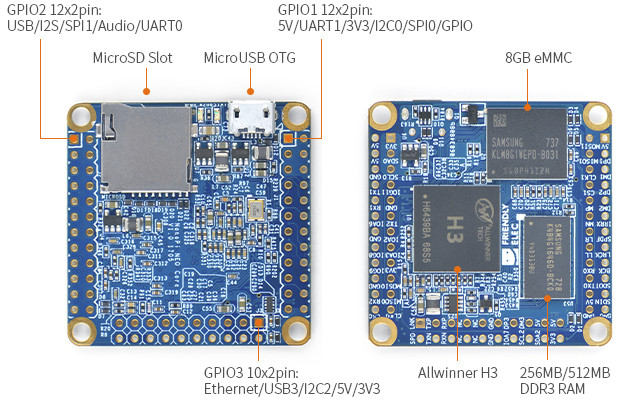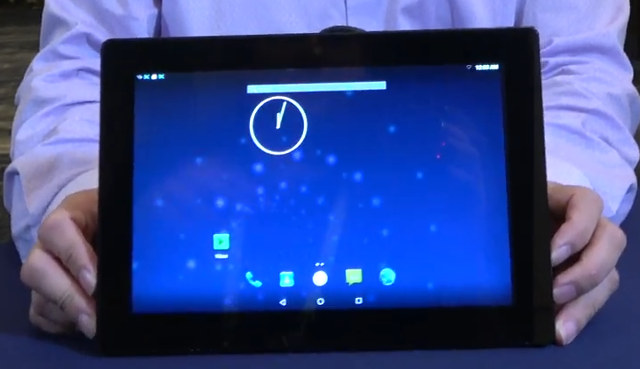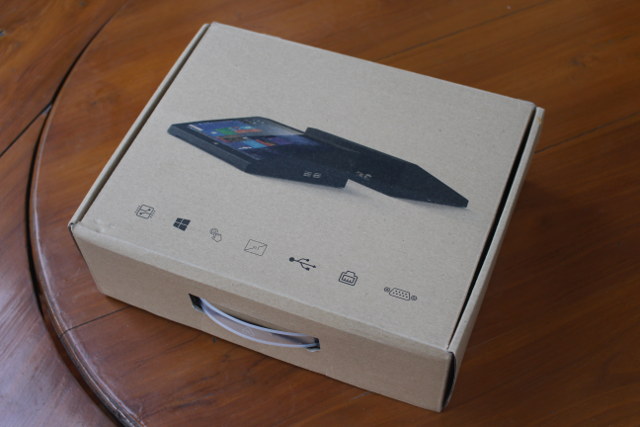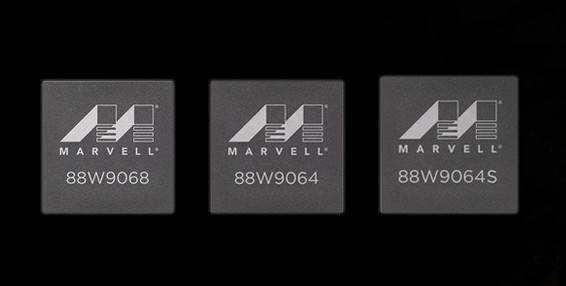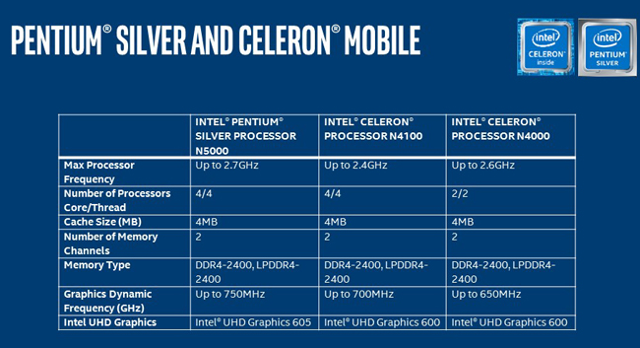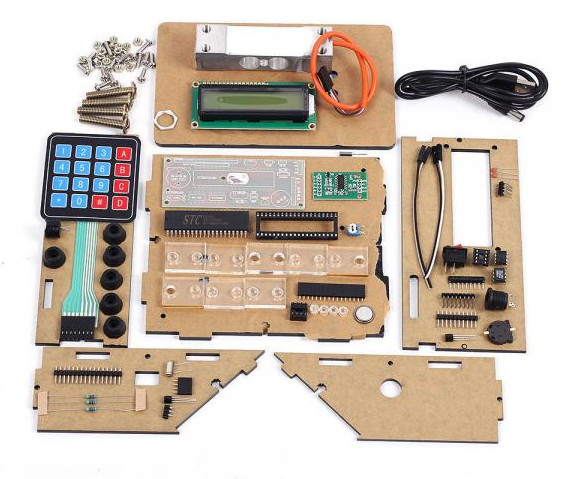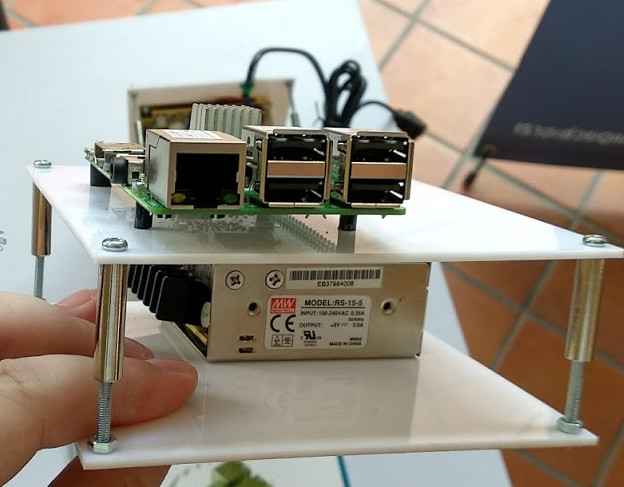FriendlyELEC has launched many cool NanoPi development boards such as NanoPi NEO2, NanoPi A64, or more recently NanoPi Duo based on Allwinner H- or A- series ARM processors, as well as some models based on Samsung/Nexcell or Amlogic SoC. The company has now launched two other NanoPi products that are a bit different since they are systems-on-module – or could even be considered minimal development boards – with namely NanoPi NEO Core powered by Allwinner H3 quad core 32-bit processor, and NanoPi NEO Core2 based on Allwinner H5 quad core 64-but processor. NanoPi NEO Core Specifications: SoC – Allwinner H3 quad core ARM Cortex-A7 processor up to 1.2GHz with Mali-400MP GPU System Memory – 256MB or 512MB DDR3 RAM Storage – NC/8GB/16GB/32GB eMMC flash, micro SD slot USB – 1x micro USB OTG port also used for power input Expansion – 2x 2.54mm pitch 24-pin headers, 1x 2.54mm pitch 20-pin […]
Geniatech & Arrow Are Working on Tablet Docks for 96Boards Development Boards
Geniatech has been working on some interesting tablet docks specifically designed for 96boards compliant hardware platform. They showcased a prototype at Linaro Connect US 2017 with their “almost-96Boards-compliant” Developer Board IV based on Snapdragon 410E which adds an Ethernet port to 96Boards CE specifications.The model showcased comes with a 10.1″ FullHD touchscreen display, and should work with all 96Boards CE edition boards once launched. JinJun Fang, CEO of Geniatech, also mentioned they are discussing with Arrow Electronics, which will manage distributions, about other 7″ and 13″ models. The video – by Charbax – embedded below was filmed in September 2017, but AFAIK the 96Boards tablet docks have not launched yet, and Geniatech did not reply to request for information, so we’ll have to wait a little longer before launch. Mr Fang also mentioned a new Snapdragon 820 based board coming later-on, maybe Developer Board V? Via ARMdevices
VESA Introduces DisplayHDR Specifications for PC Monitors and Laptop Displays
HDR (High Dynamic Range) used to be a feature specific to cameras, but recently HDR got into phones and televisions with solutions like HLG, HDR10 or Dolby Vision. The Video Electronics Standards Association (VESA) has now announced DisplayHDR open standard specifying high dynamic range (HDR) quality for PC monitors and laptop displays that use liquid crystal display (LCD) panels. DisplayHDR version 1.0 specifies three levels of HDR system performance (DisplayHDR 400, 600 and 1,000) with different white luminance, black level, and bit-depth “performance”. An automated testing tool will be available for the users to perform their own testing if required. HDR display in PC will mostly be useful while watching movies, gaming, and creating photo and/or video content. The requirements for DisplayHDR 400, DisplayHDR 600, and DisplayHDR 1000 are listed in details in the table below from DisplayHDR.org website. Eventually DisplayHDR will also support the less common OLED display, and a list of […]
F6 / GOLE 10 Mini PC Tablet Review- Part 1: Specs, Unboxing and Teardown
Mini PCs and tablets are normally distinct product category, but in recent years we’ve seen mini PCs fitted with touchscreen displays, which are somewhat like industrial panel PCs with mostly consumer grade, and with the display placed at an angle. PiPo has designed several of those with models such as PiPo X8 or PiPo X9S. Shenzhen Qianhai GOLE Technology (aka GOLE) is another company manufacturing “mini PC tablets”, but when I reviewed their first GOLE1 model, I did not find it very useful because a 5″ display is quite inconvenient with Windows 10, and even for Android as if you may not always keep it close like a phone, except for some very specific applications. The company has now launched another model called GOLE 10 (aka F6), still based on an Atom x5 processor, but that should be more useful thanks its 10.1″ touchscreen display with 1920×1200 resolution. I’ve received […]
Marvell 802.11ax WiFi Chips are Designed for Enterprise Gateways, Mainstream Routers, and Set-Top Boxes
High-Efficiency Wireless (HEW), better known as 802.11ax, is a new WiFi standard that is supposed to deliver up to 10 Gbps bandwidth over 2.4 and 5.0 GHz frequencies, and improve the average throughput per user by a factor of at least 4 times in dense environments. Several draft of the specifications have been voted on, but the latest 802.11ax timeline seems to indicate the final 802.11ax specifications will only be approved sometimes in 2019. This has not prevented companies to announce or unveil 802.11ax SoC or solutions based on the draft specifications, as we’ve seen in the past with NXP Layerscape LA1575 programmable WiSoC, Qualcomm gateway reference design, and Broadcom Max WiFi chips. Marvell has now joined the fray with their 802.11ax wireless portfolio. All Marvell 802.1ax WiSoCs support all using uplink & download OFDMA / MU-MIMO, 1024 QAM, off-channel spectrum scanning, dedicated in-service monitoring, and precision location. Three SKUs […]
Six Intel Gemini Lake Processors Launched: Pentium Silver N5000 / J5005, and Celeron N4100, N4000, J4105 and J4005
Most of us have been expecting Intel Gemini Lake processors for a while, many of the features are already known, but there were some delays, and Intel has now only officially launched Intel Gemini Lake family with 6 processors. The models include two Pentium Silver quad core processor with N5000 for mobile, J5005 for desktop, and four Celeron dual/quad core processors with N4000 & N4100 for mobile, and Celeron J4005 & J4105 for desktop. All processors share the same 4MB cache which will help with performance improvement, and dual channel DDR4-2400, LPDDR4-2400 memory. Pentium processors come with Intel UHD Graphics 605 clocked up to 750/800 MHz, and Celeron processors are instead equipped with UHD Graphics 600 up to 650/750 MHz which the exactly frequency depending on model. The company also introduced Intel Pentium Silver and Intel Pentium Gold brand levels with the former on Gemini Lake architecture, and the latter […]
Build your own Digital Scale with this DIY Kit
Electronics DIY kits are easy to find from either Arduino kits, or robotics kits, to oscilloscope kits among others. But I can’t remember ever seeing digital scale kits, maybe because I did not look for it, but that’s exactly what I found on ICstation for $27.99 with a scale that can measure weights up to 10 kilograms with a reported one gram accuracy. The DIY scale can also be pruchased on eBay for $29.99. Main items in the (Trans–CRS–162DZC) kit and features: MCU – STC MCU Limited STC89C52 8-bit (80C51 compatible) MCU in 40-pin DIP package RTC – DS1302 8-pin DIP chip + CR1220 socket and battery EEPROM – AT24C02 serial EEPROM (DIP chip) Display – LCD1602 16×2 digit display Keypad – 4×4 matrix keypad Sensors – DS18B20 one-wire temperature sensor, “C3 high precision” 10kg strain pressure sensor Boards – HX711 load cell amplifier module, printed circuit board for the MCU, […]
MeanWell Mini Switching Power Supplies May Be Useful for Development Boards
While some people or organizations with lots of boards may use high-end USB hubs to power and control them, most people likely use wall adapters to power their development boards like Raspberry Pi 3, ASUS Tinkerboard, Orange Pi PC, and so on. At least that’s what I do, except in some cases when I suspect power issues, and I go with a more powerful SMPS (switch mode power supply). I don’t use it often because it’s a large brick and expose 220V. But the other day, as I attended Chiang Mai Maker Party, I found one maker uses some tiny (and cute) power supply from a company called Mean Well to power his Raspberry Pi boards. The model used above with RS-15-5 with takes 100-240VAC 0.35A input, and output 5VDC up to 3A. The power supply include AC Neutral, AC Live, Ground, DC V+ and DC V- pins where you […]


